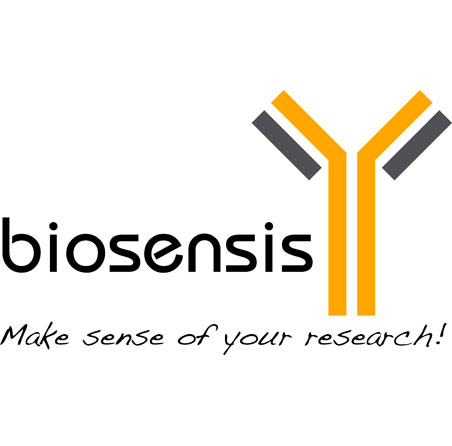Hypoxia-inducible factor-1 alpha (HIF-1-alpha), Rabbit Polyclonal Antibody
Only %1 left
Catalog Number
R-1722
Discontinued
- Product Name Hypoxia-inducible factor-1 alpha (HIF-1-alpha), Rabbit Polyclonal Antibody
- Product Description Rabbit anti-Hypoxia-inducible factor-1 alpha (HIF-1-alpha) Polyclonal Antibody (Unconjugated), suitable for WB.
- Alternative Names HIF-1 alpha; HIF1 alpha; ARNT-interacting protein; Member of PAS protein 1; Basic-helix-loop-helix-PAS protein MOP1; HIF1A; MOP1;
- Application(s) WB
- Antibody Host Rabbit
- Antibody Type Polyclonal
- Specificity The specificity of this antibody has been confirmed by WB against the antigen. Human; rat
- Species Reactivity Human, Rat
- Immunogen Description A synthetic peptide corresponding to a sequence at the N-terminus of human HIF-1-alpha (8-21aa NDKKKISSERRKEK), different from the related rat and mouse sequences by two amino acids.
- Conjugate Unconjugated
- Purity Description Affinity purified on antigen column
- Regulatory Status For research use only.
Product Info
- Product Description Rabbit anti-Hypoxia-inducible factor-1 alpha (HIF-1-alpha) Polyclonal Antibody (Unconjugated), suitable for WB.
- Application(s) WB
- Application Details Western Blotting (WB), IHC-P. A concentration of 0.1-0.5 µg/mL is recommended for WB. Human HIF-1 alpha (isoform 1) has a predicted length of 826 residues and a MW of 93 kDa. A concentration of 0.5-1.0 µg/mL is recommended to detect HIF1A in formalin fixed and paraffin embedded tissues. Heat mediated antigen retrieval is required by boiling the formalin/paraffin sections in 10mM citrate buffer, pH6.0 for 20 mins. Biosensis recommends optimal dilutions/concentrations should be determined by the end user.
- Target Hypoxia-inducible factor-1 alpha (HIF-1-alpha)
- Specificity The specificity of this antibody has been confirmed by WB against the antigen. Human; rat
- Target Host Species Human
- Species Reactivity Human, Rat
- Antibody Host Rabbit
- Antibody Type Polyclonal
- Antibody Isotype IgG
- Conjugate Unconjugated
- Immunogen Description A synthetic peptide corresponding to a sequence at the N-terminus of human HIF-1-alpha (8-21aa NDKKKISSERRKEK), different from the related rat and mouse sequences by two amino acids.
- Purity Description Affinity purified on antigen column
- Format Lyophilized with 5 mg BSA, 0.9 mg NaCl, 0.2 mg Na2HPO4, 0.05 mg Thimerosal, 0.05 mg NaN3
- Reconstitution Instructions Spin vial briefly before opening. Reconstitute in 100 µL sterile-filtered, ultrapure water to achieve an antibody concentration of 1 mg/mL. Centrifuge to remove any insoluble material.
- Storage Instructions At least 12 months after purchase at 2-8°C (lyophilized formulations). After reconstitution, aliquot and store at -20°C for a higher stability.Avoid freeze-thaw cycles
- Batch Number Please see item label.
- Expiration Date 12 months after date of receipt (unopened vial).
- Alternative Names HIF-1 alpha; HIF1 alpha; ARNT-interacting protein; Member of PAS protein 1; Basic-helix-loop-helix-PAS protein MOP1; HIF1A; MOP1;
- Uniprot Number Q16665
- Uniprot Number/Name Q16665 (HIF1A_HUMAN)
- Scientific Background Functions as a master transcriptional regulator of the adaptive response to hypoxia. Under hypoxic conditions, activates the transcription of over 40 genes, including erythropoietin, glucose transporters, glycolytic enzymes, vascular endothelial growth factor, HILPDA, and other genes whose protein products increase oxygen delivery or facilitate metabolic adaptation to hypoxia. Plays an essential role in embryonic vascularization, tumor angiogenesis and pathophysiology of ischemic disease. Heterodimerizes with ARNT; heterodimer binds to core DNA sequence 5'-TACGTG-3' within the hypoxia response element (HRE) of target gene promoters (By similarity). Activation requires recruitment of transcriptional coactivators such as CREBBP and EP300. Activity is enhanced by interaction with both, NCOA1 or NCOA2. Interaction with redox regulatory protein APEX seems to activate CTAD and potentiates activation by NCOA1 and CREBBP. Involved in the axonal distribution and transport of mitochondria in neurons during hypoxia. Uniprot UniProtKB - Q16665 (HIF1AβHUMAN).
- Shipping Temperature 25°C (ambient)
- UNSPSC CODE 41116161
- Regulatory Status For research use only.

 1800 605-5127
1800 605-5127 +61 (0)8 8352 7711
+61 (0)8 8352 7711
